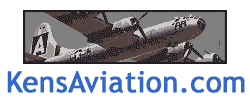|
||||
|
The Boeing Company
| Aircraft |
The Company |
|||||||||||||||||||||||||||||||||||||||||||||||||||||||||||||||||||||||||||||||||||||||||||||||||||||||
|
|
|
|||||||||||||||||||||||||||||||||||||||||||||||||||||||||||||||||||||||||||||||||||||||||||||||||||||||
|
Boeing
got it's start with the B&W Model 1 floatplane. Named
after Boeing and his partner, Commander Westervelt, USN, the Model 1
first flew in 1916.
Boeing survived the early twenties through contracts to build the U.S. Army's Thomas Morse MB-3A fighter and rebuilding deHavilland DH-4s with arc-welded steel- tube fuselages. Boeing (along with Curtiss) dominated the U.S. fighter market during the 20's and early 30's. Excellent examples are the F4B/P-12 and the P-26 Peashooter. Boeing also entered the commercial market at this time with the introduction of Models 40 and 80 and the formation of Boeing Air Transport. Boeing Air Transport was eventually renamed United Aircraft and owned Boeing, United, Pratt & Whitney, Stearman, Chance Vought, Sikorsky and Hamilton Standard before it was broken up in 1934. By the mid-30's Boeing had refocused its business on larger aircraft--specifically commercial and bomber aircraft. Examples include the B-17 Flying Fortress and Model 314 Clipper. Boeing continued its large aircraft success through World War II and the post-war years with the B-29 Superfortress, Model 377 Stratocruiser, B-47 Stratojet and B-52 Stratofortress. Boeing was also in the forefront of commercial jet development with the 707 in 1958. Boeing acquired Vertol Aircraft in 1960, the space and defense divisions of Rockwell in 1996 and McDonnell Douglas in 1997. |
|||||||||||||||||||||||||||||||||||||||||||||||||||||||||||||||||||||||||||||||||||||||||||||||||||||||
|
Related Websites |
||||||||||||||||||||||||||||||||||||||||||||||||||||||||||||||||||||||||||||||||||||||||||||||||||||||||
|
||||||||||||||||||||||||||||||||||||||||||||||||||||||||||||||||||||||||||||||||||||||||||||||||||||||||
|
Stuff You Can Buy |
||||||||||||||||||||||||||||||||||||||||||||||||||||||||||||||||||||||||||||||||||||||||||||||||||||||||
|
||||||||||||||||||||||||||||||||||||||||||||||||||||||||||||||||||||||||||||||||||||||||||||||||||||||||
|
|
|
||||||||||||||||||||||||||||||||||||||||||





